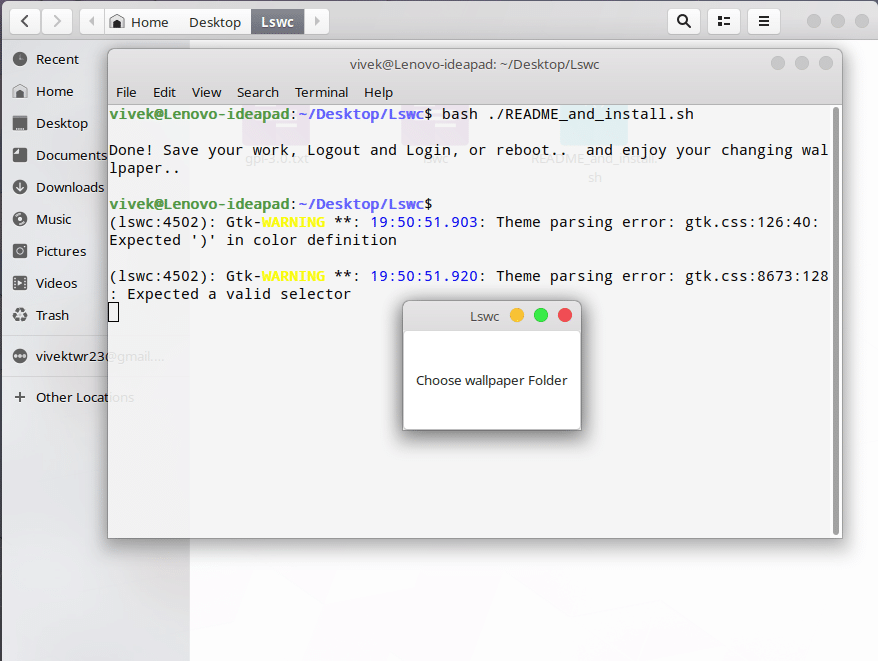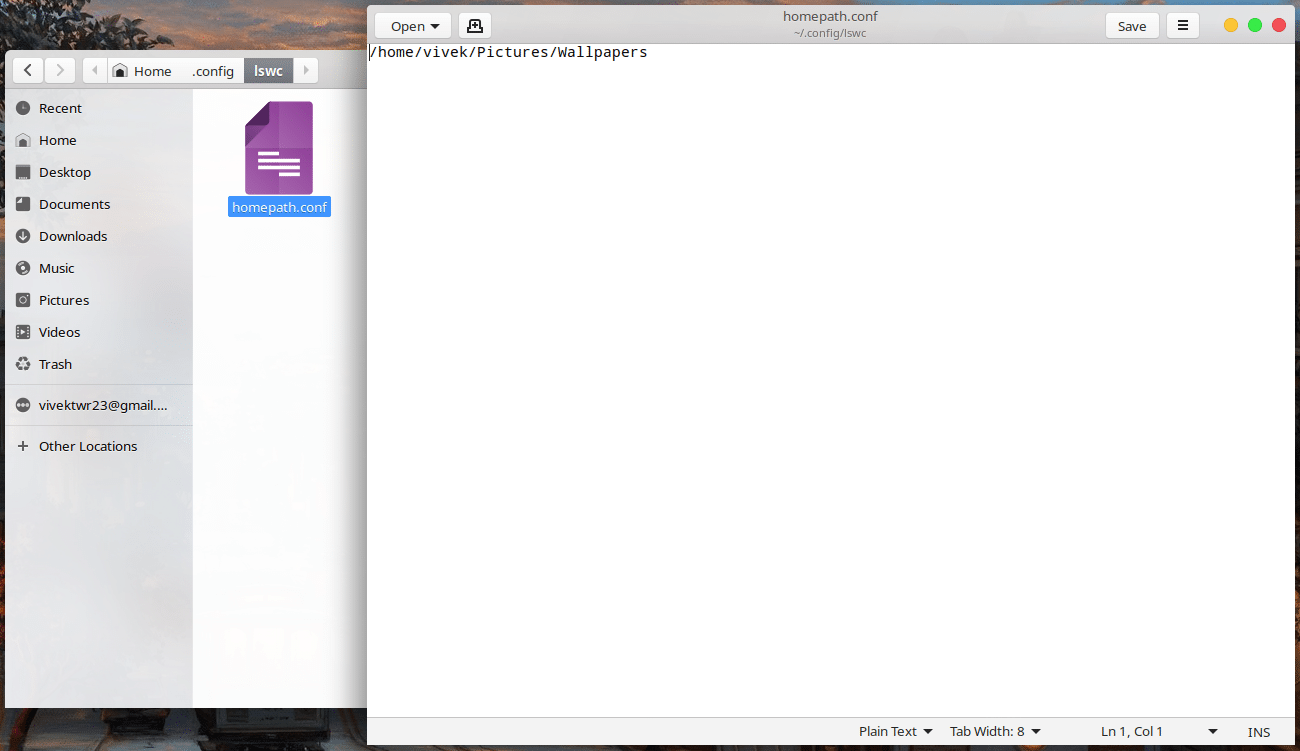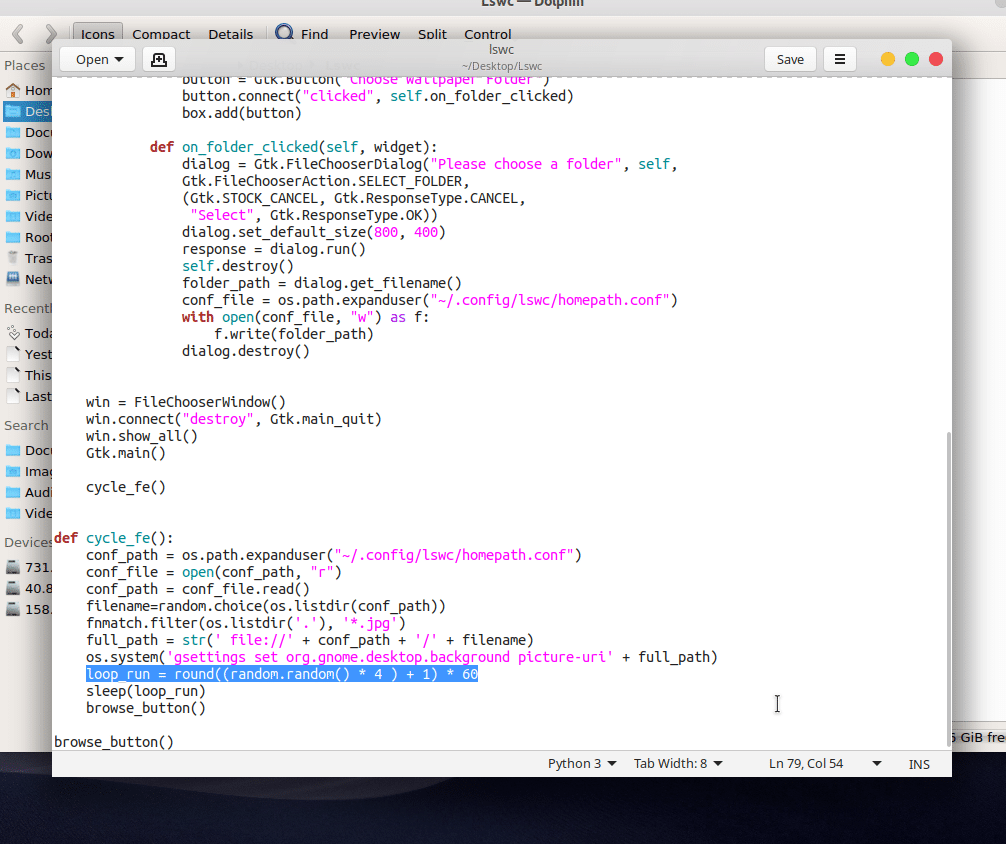The latest GNOME already has a feature that automatically changes the wallpaper throughout the day much like Windows 10. Since GNOME is the default desktop in Ubuntu, this feature is available on Ubuntu by default. However, unlike Windows 10, there isn’t a feature to change wallpapers from your collection automatically. Not without the help of a third-party script or tool at least. In this case, the third-party script you will need is LittleSimpleWallpaperChanger or LSWC which lets you automatically change wallpapers on Ubuntu.
LSWC is a small, very light-weight script that runs in the background and it will automatically change wallpapers from the user-specified folder. The wallpapers are set to change at random intervals between 1 to 5 minutes. The setup is pretty easy and once done, you can forget about the script. Before you start with the installation though, you should probably create a folder containing all the wallpapers you want to switch amongst. Ensure all the images are in jpg or jpeg format because only those are supported.
Download and Install LSWC
- You can download the script from GitHub. This will give you a zip archive file.
- Right-click it and select Extract here.
- Open the extracted folder in a terminal. You can do this by launching the Terminal and navigating to the folder using the cd command or by opening the folder in Nautilus, right-clicking an empty area, and selecting Open in Terminal.
- Regardless of how you open the folder inside a Terminal, once you do, copy and paste this command into the Terminal and hit enter.
bash ./README_and_install.sh

- A dialogue box should now appear asking you to locate the folder you want to use as your wallpaper source. Click on it and select the folder where you’ve kept the selected wallpapers. If you prefer, you can set the Wallpapers folder in Pictures as the source folder. Any images that you set as wallpaper are automatically transferred to this folder. This means you can easily add to your collection by simply setting an image as the wallpaper.
- The script starts working right away as soon as you select the folder. If it doesn’t work, try rebooting the computer.
How to Change Wallpapers on Ubuntu using LSWC
During installation, you have already selected the source folder for wallpapers. You can still add or remove wallpapers from this folder and the script will continue to switch between available images. However, you can’t now change the name or location of the selected folder as you please. That’ll break the script, for obvious reasons. If you want to change the source folder or rename it, edit homepath.conf found in /home/.config/lswc/. You may have to press Ctrl+H in your home folder to see the .config folder. Navigate to the file and double-click to open it.
The file contains nothing but the path to your selected source folder. You can edit and save the file anytime you want to change the location.
Update
Another way you can do this is by deleting the homepath.conf file and running the script again.
The time interval before wallpapers are changed can also be modified. To do that, open the lswc file in a text editor and scroll down to the bottom. Look for the following line.
loop_run = round((random.random() * 4 ) + 1) * 60
To change the time interval, change the + 1 to + 2 or + 3, etc. Below that, you’ll find the line sleep(loop_run). This can also be modified to something like sleep(1), sleep(2) or sleep(3), etc.
Compatibility
Compatibility is something one kind of has to worry about on Linux. There are so many distros that can be quite different from each other and just as many desktop environments. LSWC is based on GTK so it should work not only on Ubuntu but any Linux distro as long as it uses GNOME desktop. The GitHub repos also contain specific versions for Lubuntu 2020 and MATE 2020 if you prefer the Lubuntu or MATE desktop environments over GNOME.
How to remove LSWC
If you decide you don’t need all the pre-defined randomness on your desktop, say you find a wallpaper you want to keep for a while, you’ll need to remove LSWC. For this, first, stop the script with the following command.
pkill lswcWith hidden files visible in your home folder (press Ctrl+H if they aren’t) navigate to and delete the following files and folders from the mentioned folders.
- scripts folder from .local
- lswc folder from .config
- lswc.desktop file from .config/autostart
That’s pretty much all you have to do to change wallpapers on Ubuntu automatically.
Read Next: Best Live Wallpaper Apps for Android

